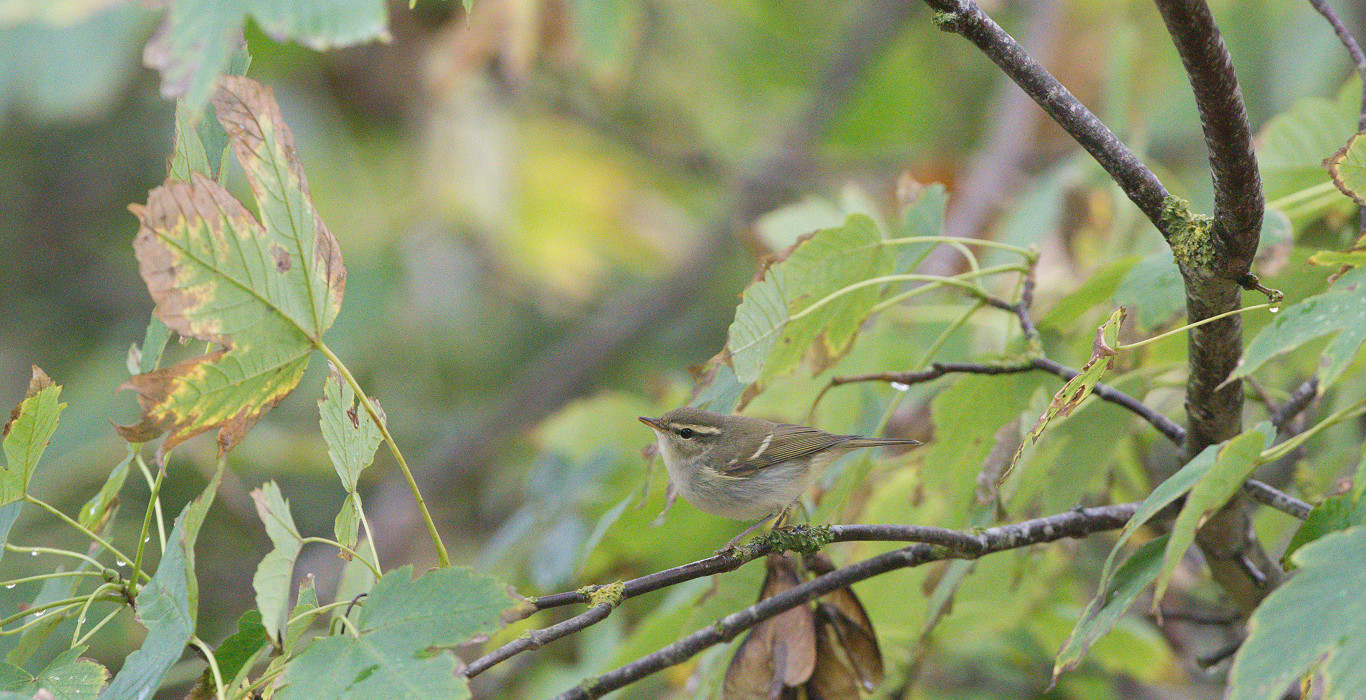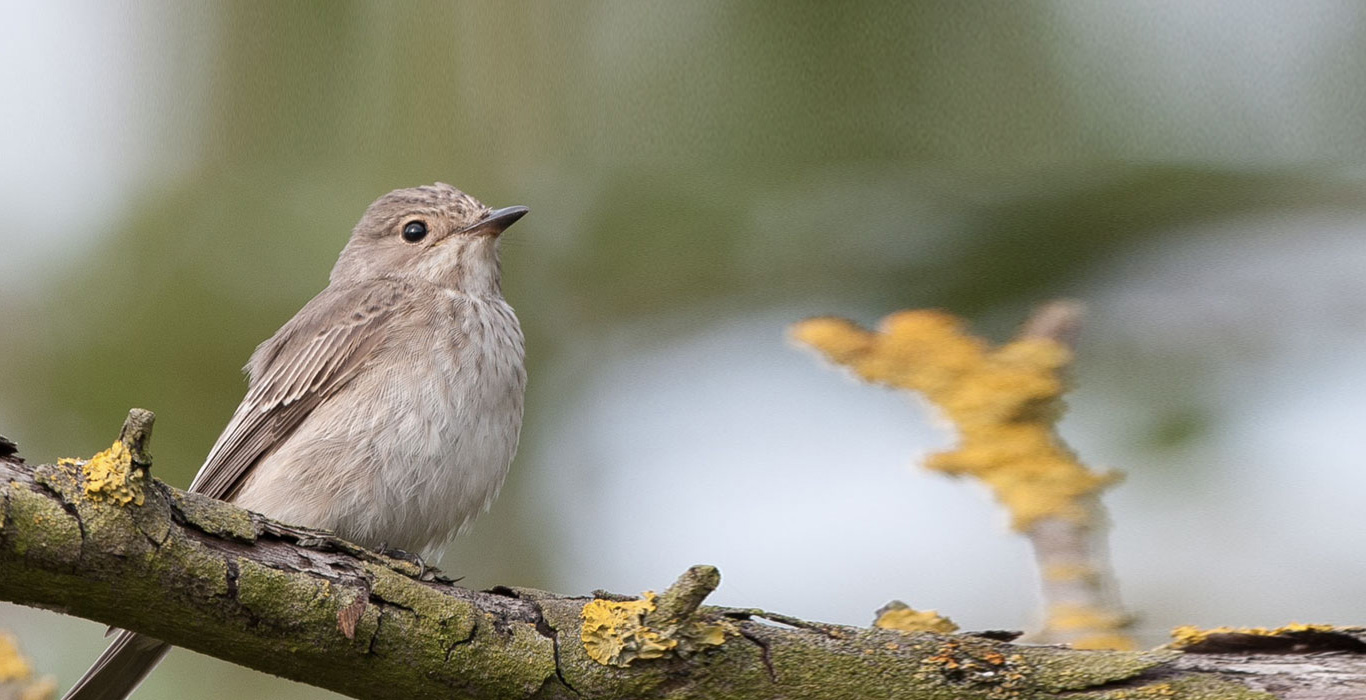The first bird that was ringed at Spurn was a Blackbird on 17th November 1945; amazingly, it was recovered near Grimsby on 19th February 1947!


There is a very early ringing record at Spurn when a Little Tern was ringed as a chick at Spurn on 10th July 1914 and was recovered in Portugal on 29th September 1914.
The first Heligoland trap at Spurn was built by G.H.Ainsworth with the help of others at the Warren in September and October 1946, this was the first type of this trap on mainland Britain, the only others were on Skokholm and the Isle of May, the only two Observatories in Britain at that time. The first bird that was ringed in the trap was a Blackbird on 17th November 1945; amazingly, it was recovered near Grimsby on 19th February 1947!
These Heligoland traps along with automatic walk in traps were the main tools for catching birds in the early years of the Observatory; they were heavily baited with food that attracted large numbers of sparrows, finches and buntings.


In 1948, consent was given for a trap to be built in a bushy hollow below the guns at the Point. They were the last bushes under the lea of the sand dunes before the bare sand and the Humber mouth, this trap was very prolific, with over 1000 birds trapped in it during 1949. Unfortunately in 1950 the War Department decided to bulldoze the dunes around the bushy hollow, and the trap had to be dismantled. The military helped to move the materials to Wire Dump where it was used there. During 1951 a double-ended trap was built at Chalk bank by the Clubley brothers (Redvers and Wally) these were known as Chalk Bank South and North, these traps were in full working order by late June. A new trap was completed at Chalk Bank in early April 1956 and christened ‘Carrie’, after Carrie Leonard who ran the local café, this was also known as Chalk Bank East trap, this became the fifth working Heligoland trap at Spurn with the other traps at Wire Dump, Chalk Bank North, Chalk Bank South and Warren.
The next trap was at the Point which was built on the east side of the dunes it was built in 1960 and dismantled in 1978. The ‘Hollow trap’ at the Point was built in 1966 and with a few alterations and repairs over the years it still stands today being a very productive trap, particularly for warblers, thrushes and Starlings in the autumn. Although now with a lack of road access to the Point, it is not being used as much as it could be but is still very much operational. The other Heligoland traps still standing are the ones at the Warren and Wire Dump.
The Wire Dump trap is mainly used for catching Meadow Pipits, on good days of passage in September with a SW-W wind, a tape lure is placed in the mouth of the trap and the birds drop down into the trap. When a good number of pipits have gathered, they are pushed into the end of the trap. There have been some very good day catches including 735 on 22nd September 2004. A SITA grant was secured in 2013 for the development of Tree Sparrow habitat, this was used for developing Church Field with the planting of trees and shrubs and providing migrant cover and feeding areas. A new Heligoland trap was also built there and is already proving very useful, catching warblers, thrushes and sparrows and even a Little Owl. In the early 1950s, large numbers of Snow Buntings used to congregate and feed in the area of saltmarsh and flooded meadow at Chalk Bank. A few of the regular ornithologists used to spend weekends in the winter months, trapping and ringing the Snow Buntings, these were mainly caught using Potter and Sparrow traps. 2257 Snow Buntings have been ringed at Spurn, the majority prior to 1962.
In more recent years, there have been few large flocks with only small numbers being ringed each year. Good numbers of recoveries showed that birds of both races P.n.nivalis, which is found in Arctic Europe and Arctic North America, and P.n.insulae that comes from Iceland, Faroe Islands and Scotland were found to be wintering together at Spurn! The Potter and Sparrow traps are very rarely used now at Spurn.
Mist-nets first appeared in 1957 but were the talk of the town a year or so before that when Ralph Chislett wrote in Birds on the Spurn Peninsula, (1956): “very recently a fine meshed, almost invisible net of nylon fastened between light poles and placed where birds are likely to collide with it, has been introduced from Japan, where uses for it have no connection with ringing. It is the old fowler’s technique over again, used by people whose interest is in the living bird. Birds are held in the springy texture.
The mist-net should never be left unwatched; caught birds should be attended to at once. We regard the possible use of mist-nets with misgiving; but it should be possible for their use at observatories to be strictly controlled. If left unwatched, casualties are sure to occur.”

In 1957 a mist-net was used for the first time on Beacon Lane by R.Spencer on 29th August trapping one Wheatear, one Willow Warbler, one House Sparrow, five Greenfinches and three Linnets. It was used for demonstration purposes and was quite effective at catching waders at Chalk Bank where it caught 3 Ringed Plovers and 13 Dunlins, along with the passerines on Beacon Lane. Chislett wrote on 30th, “it would seem we shall have to get a mist-net, but its use will have to be severely restricted”.
Mist-nets were used with more regularity from the late 1950s and became a very useful tool for catching waders at night time roosts at Chalk Bank, Beacon Ponds and Long Bank; they are still being used in the same way today. Being light and portable mist-nets are a very useful tool for targeting birds to sort out identification or ageing of unusual birds, or for putting in an area where there are large concentrations of birds after falls and also at roosts of passerines. Set ringing rides have been created at the Point and along the peninsula as well as at the Warren, Kew Villa and Church Field. In some cases nets are in permanent situ and can be unfurled quickly in the early morning to maximize the catching potential. Barry Spence arrived at Spurn in 1964; he was an experienced ringer with a wide range of catching techniques to call upon. The annual ringing totals not only increased after his arrival but also the variety of species as well. The number of waders, hirundines and thrushes ringed in 1965, was far greater than in any previous year. This was mainly due to different trapping techniques not used at Spurn before, but now utilized to the full by Barry Spence. The first BTO ringing course at Spurn was held in October 1968 which made use of one of the derelict buildings at the Point which had been converted into a ringing laboratory that year. Another derelict building at the Warren was also converted into a ringing laboratory in 1971, prior to this ringing used to take place in an old shed in front of the Heligoland trap. In 1998, the Observatory purchased Kew Villa in Kilnsea, with a view to this being the site of a new Observatory when the present one at the Warren would be lost due to erosion. The cottage became the warden’s accommodation but also came with a five CL caravan site and a mature garden that has proved to be an excellent additional ringing site.
In 1999, the Observatory also bought an additional piece of land adjacent to Kew Villa and behind the Church and aptly re-named Church Field. This has been developed over the years into good habitat for migrant birds and is another very good ringing site. Ringing remains one of the major Observatory activities, but its popularity fluctuated somewhat over the years with fewer ringing groups coming to stay at Spurn, particularly during the late 1990s and reaching an all-time low in 2001 when there was no active ringer (other than Barry Spence who was still employed by YWT). That year only 1850 birds were ringed.
This all changed in 2003 when the Observatory committee employed Paul Collins as the new Observatory warden. He is a very experienced and active ringer and qualified trainer; this along with Barry Spence retiring from the YWT in 2002 has seen the ringing total exceed 10,000 birds in seven years since then, including 17,575 of 97 species in 2010. Paul Collins has taken many trainee ringers under his supervision; several of them now with full A permits and training permits of their own and are still regular ringers at Spurn today, which should see the ringing scene at Spurn into a healthy position for years to come. Barry Spence has been very active since his retirement that has given him more time to ring birds or see to his moth traps, but also to keep all the ringing records impeccably up to date.
A total of 3465 birds ringed at Spurn have been recovered elsewhere involving 101 species. Recoveries of birds ringed at Spurn, or birds ringed elsewhere and recovered at Spurn provide an assortment of information, whether it is birds using the same feeding area all winter, or just flying a few miles to a favoured feeding area, proving that some birds overshoot and how quickly they make their way to their breeding areas. The percentage of recoveries of thrushes from certain countries indicates where the majority of these birds breed.


The birds of Spurn book has a wealth of information gained from the ringing activities at Spurn and is a must read, any ‘interesting’ recoveries are dealt with in the individual species accounts. Recovery details also include sightings of colour ringed or colour marked birds, giving us information on certain individuals without having to trap the birds. This is particularly useful for species such as wildfowl, herons and storks, waders, gulls and terns. Wing-tags on raptors is another way of keeping track on some highly migratory species, several of which have been seen migrating over Spurn. Ringing demonstrations are occasionally organized (weather dependent) either in Church Field or at the Warren, explaining how, why and when and giving birders and non-birders alike a chance to see this important work undertaken by the Observatory.
Over the years, many rare and scarce birds have been ringed at Spurn including some birds found in a mist-net and not seen prior to or after release; the River Warbler in 1981 was one such bird. Non-ringers like to see a bird in the hand, whether it is just to get in on their lists or to actually see a bird close up and see details you don’t always get to see in the field.
Wherever possible, certainly since the late 1980s, ‘good birds’ have been shown to the public while ever the bird has looked healthy and not stressed. It is not ‘your right’ to see a bird in the hand that has been caught, if the ringer thinks the bird is looking stressed or unwell, they will release the bird without public viewing. Situations like this are not common and most birds are shown healthy and alert and to very appreciative, well behaved crowds. This can be a good income earner for the Observatory, with collection buckets placed/rattled allowing people to contribute to the running costs of the Observatory.

